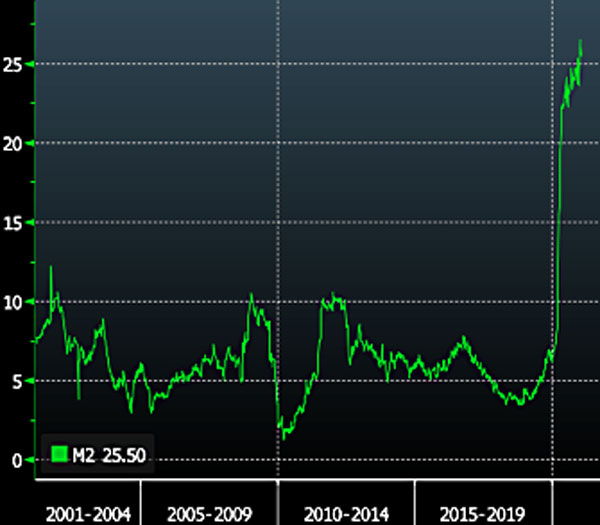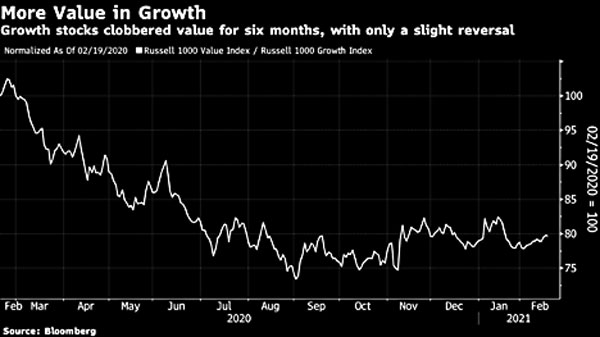Today marks the one-year anniversary of the COVID storm into financial markets: a year of despair, volatility, amazing comebacks and puzzling market action.
John Authers at Bloomberg correctly points out that the last twelve months will be studied for decades in order to give us a better understanding of market related behavioral biases, policy responses and market effects. As a Prof. of Finance, I can certainly second Authers’ belief and confirm that the debate and studying has indeed begun.
However, not all the action was befuddling. Event driven corrections such as the one caused by COVID do tend to be fast, violent, and quick in recovery as Peter Oppenheimer duly research in his book “The Long Good Buy.” An element that certainly has underpinned such a great recovery in financial assets was the outlandishly aggressive and quick response by the Federal Reserve. The following chart, courtesy of Bloomberg, shows how massive and quick the monetary policy response was even when compared to the similar approach implemented in the 2008 crisis.

The second factor that was critical in accelerating the recovery was the unexpectedly efficient and fast discovery of working vaccines. While we are still struggling with the roll-out of a logistically difficult global vaccination program, the response by the biopharma community was short of miraculous.
Looking ahead, it may be that the combination of unprecedented monetary policy and almost equally generous fiscal policy might have created conditions for longer term anomalies. One thing that is certain in financial markets is that their own complexity, mixed with the uncertainty of human response, makes them recurrently prone to the law of unintended consequences.
We can already see some disturbing effects of that as we witness the significant outperformance of volatile stocks over profitable ones. The next chart shows the incredible gap in performance between a US Pure Volatility Portfolio versus a US Pure Profitability Portfolio.

(source: Bloomberg)
When an entire class of novel investors (Robinhood anyone?) prefers volatile, bad balance sheets corporations over profitable businesses, the anomaly becomes an accident waiting to happen.
Another persistent anomaly in the current market, is the outperformance of Growth over Value. This historical gap between the two investment approaches might be less systemically dangerous than the volatility-profitability gap but it is certainly significant in the context of portfolio construction. While it probably indicates that an opportunity is available in Value, one must also recognize that some areas of Value might be undergoing structural changes versus cyclical moves. Such a realization forces a different approach to Value where some screening metrics might need to be adjusted.

(Source: Bloomberg)
In the end, what the last twelve months proved, is the wisdom of diversified portfolios and the inherent advantage of taking a systematic, long term approach to investing.
